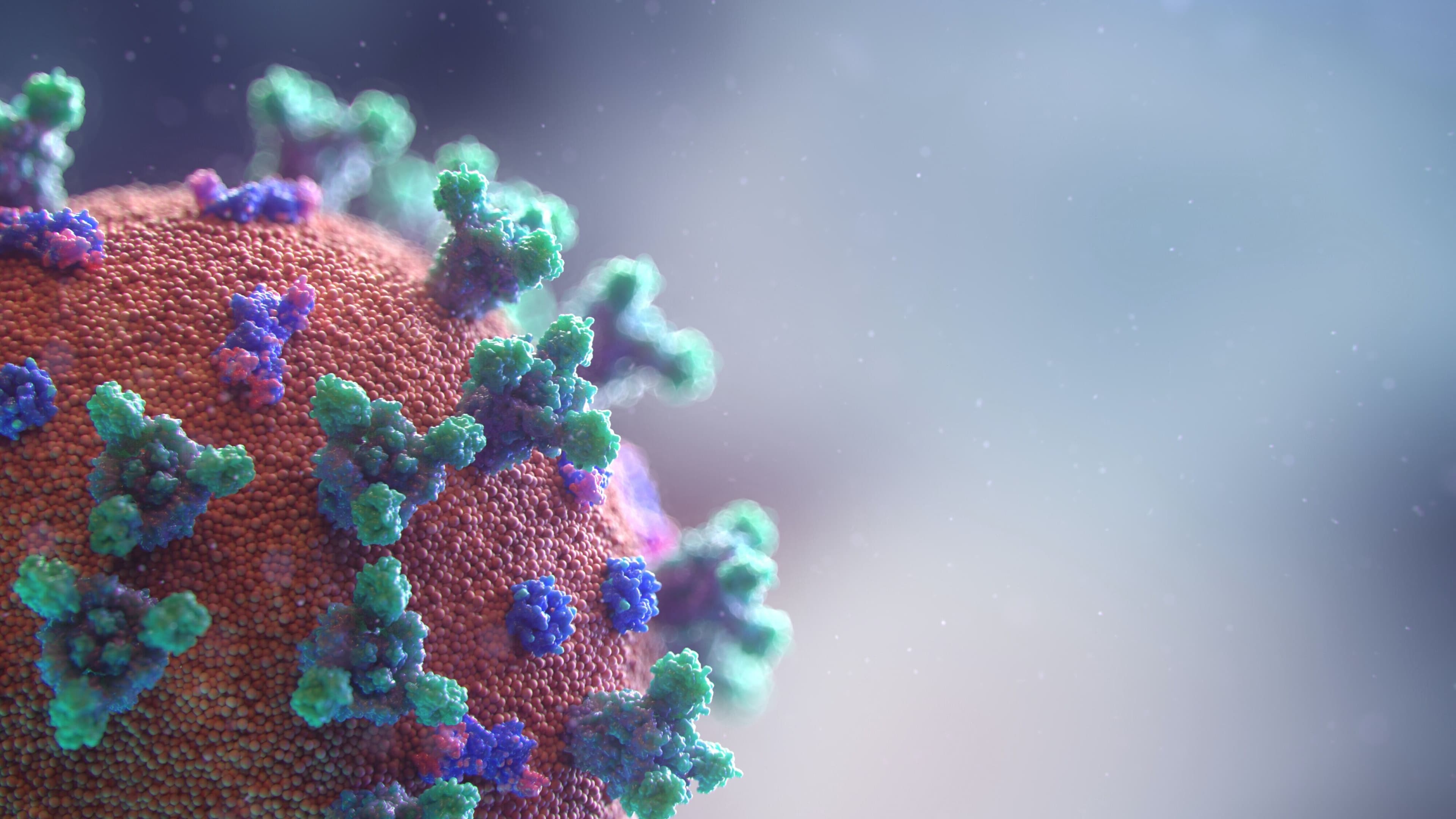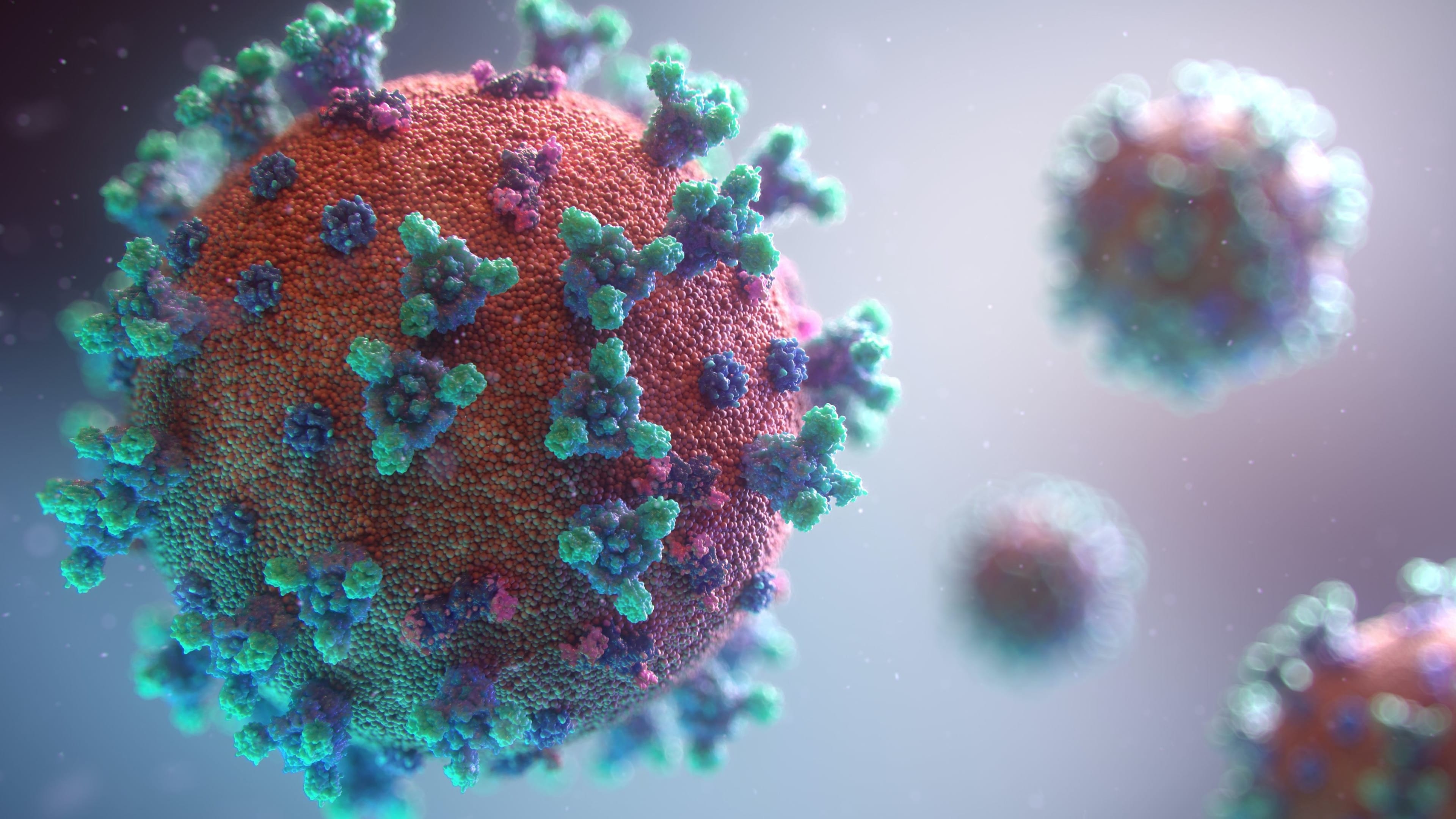An expert in infectious animal diseases answers questions on this pandemic – and the next one

Dr. Suzan Murray has spent her career studying the intersection of human, wildlife and environmental health. Image: World Economic Forum / Jakob Polacsek

Explore and monitor how COVID-19 is affecting economies, industries and global issues

Get involved with our crowdsourced digital platform to deliver impact at scale
Stay up to date:
COVID-19
- With over 1.6 million viruses predicted to exist in nature, if we do not act now, the likelihood of another pandemic occurring in our lifetimes is substantial.
- Most new or emerging diseases come from animals but human activities are increasing the risk of contagion.
- Recognising the links between animal and human health and taking a 'One Health' approach could help prevent or limit the impact of future outbreaks.
While many of us may only have become aware of the links between viruses, wildlife and habitat destruction recently, Dr. Suzan Murray has spent much of her career studying the intersection of human, wildlife and environmental health.
A zoo veterinarian at the Smithsonian Conservation Biology Institute (SCBI) and both the program director of the SCBI’s Global Health Program and its chief wildlife veterinary medical officer, in 2016, Suzan spoke at the World Economic Forum’s Annual Meeting of the New Champions, offering a vision of what would be needed to stop pandemics before they start.
We caught up with Suzan to hear her thoughts on COVID-19, the threat of further pandemics in the future, and what we need to do now in order to prepare.
Amongst the many roles you’ve held, you have been a veterinary scientist travelling the world to investigate emerging infectious diseases in animals that could jump to humans (zoonotic diseases). Can you begin by telling us more about the links between human, wildlife and environmental health and specifically how diseases pass between species?
Over the last 10 years we've learned a lot about how closely interlinked human and animal health are. There are many drivers of disease emergence and both the number of drivers and their rate of occurrence are increasing. Human activity is a common factor to many of these - just think of changes in land use like deforestation, or expanding cities bringing high human population densities closer to previously wild areas. These factors are forcing wild species into contact that would not otherwise take place with domesticated animals and humans, increasing the likelihood that new or unknown diseases could be passed on.
One of the biggest takeaways for me is that while we’ve talked about the global economy for decades, we haven’t thought of health in that way. Unfortunately, this coronavirus has now demonstrated that health is a global issue and we are all connected – all species, all nations, all continents.
The bad news is that the COVID-19 pandemic might not be a once-in-a-lifetime experience. Modelling tells us that we’ve so far discovered less than one percent of all existing viruses in wildlife. It’s likely that there are over 1.6 million viruses in total. While not all will be transmissible to humans, and of those that are some will be less harmful, this is a large enough number to be able to say with certainty that outbreaks will occur again and changes in human behaviour are increasing the likelihood of this.
There have been several outbreaks of zoonotic diseases in the past decade but none have gone on to become a pandemic. What was different this time, that allowed this coronavirus to spread so far and so quickly?
Of the 1,000 or so viruses that have been studied so far, there are varying characteristics that define their ability to cross into humans and spread quickly. Broadly speaking, there are two kinds of virus – DNA viruses and RNA viruses. The coronavirus and influenza are RNA viruses which tend to be able to mutate more quickly and easily than DNA viruses. The rate at which a virus can mutate is an important factor to consider when investigating which viruses will be able to jump between species.
A related factor, thinking in terms of evolutionary biology, is that a virus like Ebola which kills its host quite quickly is not well adapted to transmit to very large numbers of people. With its long incubation period, symptomless infection, and lower mortality rate, the coronavirus behind the current pandemic is almost the perfect vessel to spread widely and infect a lot of people.
There has been a lot of discussion around the origin of SARS-CoV-2 – is there enough evidence to support any of the proposed transmission chains and is the answer to this question of practical importance for tackling the pandemic?
There is strong evidence that indicates that the virus most likely came from a bat but until we have that bat in our hands, we can’t say definitively. I think almost all the research so far is showing that’s where it came from. With regards to potential synthetic or lab-based origins – I am not the first to say this, but - the only way I can see this virus coming from a test tube is if there was a bat inside that test tube.

Knowing the origin of the virus is helpful in many ways, perhaps not in immediately tackling the pandemic but certainly in informing how we can try to prevent the next one. As just one example, by knowing from which animal it jumped to humans, we can investigate how that jump occured and then take actions to prevent that transmission pathway in future.
What are the most important steps for humans to take to protect against future pandemics?
There is a lot we can do. Firstly, while I think the United States Centres for Disease Control and Prevention (CDC) has done a really great job in general of responding to human diseases, we need an analogous organization for wildlife health.
Secondly, considering that all these diseases come from wildlife, we can do a lot by building wildlife health surveillance capacity in the countries and communities that are most at risk. In my opinion, this is the largest gap at the moment and community engagement has a huge part to play in addressing this. We know that decisions taken without the buy in of the people they affect rarely work. So, partnering with local communities, understanding their cultures and contexts and agreeing on what actions that can be taken to reduce contact between humans and wild species is hugely important.
Looking at the human-nature interface in greater detail, what role can the conservation of nature play in this?
Conservation certainly has a role to play. Broadly speaking, there are two arguments that could be made – one that I subscribe to, and one that I don’t.
The first argument is that through careful living with animals, maintaining wilderness and following the principles of conservation, we can minimise the risk of disease transmission while still maintaining human activities. Again, this comes back to educating the communities that are most at risk.
The second, opposite argument says, if high biodiversity is a risk factor in disease emergence, then just get rid of all the biodiversity. This, of course, misses the point - while it might help to prevent viruses crossing to humans this approach creates other problems that of equal magnitude to a pandemic. Take bats for example – they can carry viruses but are also vital pollinators. Some species of bat also eat many times their own body weight of mosquitoes a day. Clearly, removing them from an ecosystem will cause extensive and unpredictable harm.

Understandably, the current focus is on responding to and managing the pandemic but to prevent the next one, investments and preparations will have to be made. With the dire economic predictions we are seeing, are you confident that the political will and funding needed will be there?
When this outbreak is over, I think there is a risk human nature will see people trying to get away from it as quickly as possible and to not think of it for a while. That would be a mistake. We need to keep it in the forefront of people’s thinking because we can’t let this happen again. Both in humanitarian and economic terms it makes such better sense to prevent disease, than to try to treat it although large investments will be needed to help us prevent the next one. I am hopeful that governments will do what’s needed but the scientific community and general public cannot be complacent – we need to remain vocal about it.
The measures to be taken are wide-ranging, but animal research must be a core part – we have to understand where these viruses are and how they cross to humans if we’re going to succeed in preventing it. Unfortunately, funding animal research is not something that often rises to the top, especially after people have lost their livelihoods and are suffering. The most that we can do is educate people.
If implemented well, are these measures by themselves enough to prevent future outbreaks turning into pandemics or is a much broader change to how we live and consume needed?
I don’t think we’re there yet but we’ve come a long way. Ten years ago, there really weren’t that many viruses discovered - we hadn’t found many coronaviruses yet, we didn’t know what species tended to house these viruses, we didn’t know the risk factors for emergence, and we didn’t have products and protocols available for quick testing.
So, the current situation is what it looks like when there was some knowledge. I think a lot of the foundation has been laid and if we choose to really engage, I’m confident that we can do much better at tackling outbreaks in the future. There are cultural considerations to make here as well – many people depend on the bushmeat trade or wet markets for food or as a source of income. Knowing they are both risk factors in disease transmission we must scale them back in partnership with the people involved, ensuring that appropriate alternative livelihoods are made available.
I’m particularly excited by the potential of real-time syndromic surveillance in animals and humans in the countries most at risk to inform rapid response teams. There are of course serious questions around privacy but if these can be solved then I believe there is great potential for AI to help us respond more quickly in the future.
Don't miss any update on this topic
Create a free account and access your personalized content collection with our latest publications and analyses.
License and Republishing
World Economic Forum articles may be republished in accordance with the Creative Commons Attribution-NonCommercial-NoDerivatives 4.0 International Public License, and in accordance with our Terms of Use.
The views expressed in this article are those of the author alone and not the World Economic Forum.
Related topics:
The Agenda Weekly
A weekly update of the most important issues driving the global agenda
You can unsubscribe at any time using the link in our emails. For more details, review our privacy policy.
More on COVID-19See all
Charlotte Edmond
January 8, 2024
Charlotte Edmond
October 11, 2023
Douglas Broom
August 8, 2023
Simon Nicholas Williams
May 9, 2023
Philip Clarke, Jack Pollard and Mara Violato
April 17, 2023





